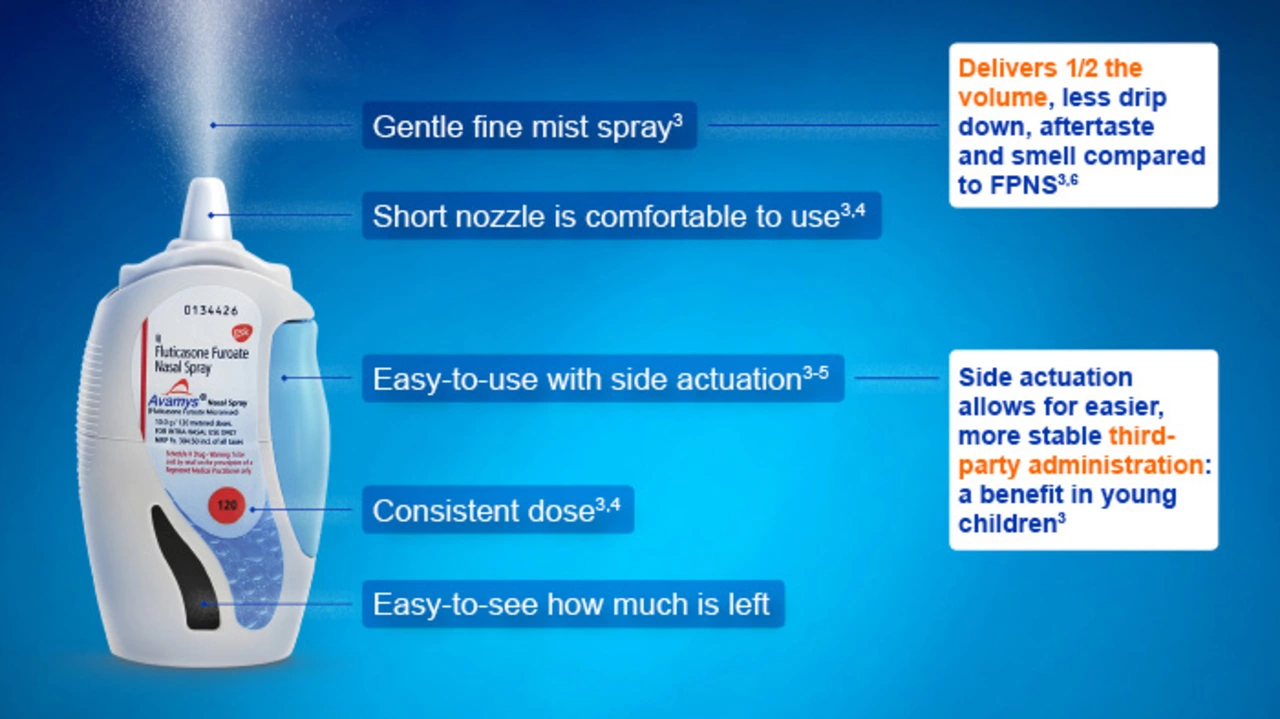Fluticasone — what it does and how to use it safely
Here’s a fact that surprises people: a daily fluticasone spray or inhaler can cut allergy and asthma flare-ups dramatically, but it won’t work like a quick-relief inhaler. Fluticasone is a steroid medicine used mainly for allergic rhinitis (nasal allergies) and as a regular controller for asthma. It reduces inflammation so symptoms happen less often and are milder when they do.
Forms, brand names and how it works
Fluticasone comes as a nasal spray (common brand: Flonase) and as an inhaler for lungs (Flovent, others). There are two main types: fluticasone propionate and fluticasone furoate — they work the same way but doses differ. The drug quiets down inflamed tissue in your nose or airways. It doesn’t open airways fast like salbutamol; instead you use it every day for steady control.
Typical effect timing: some people notice relief in 12–24 hours, but full benefit can take several days of regular use. That’s why consistency matters.
How to use fluticasone the right way
For nasal spray: blow your nose gently first. Tilt your head forward a bit, close one nostril, insert the nozzle into the other nostril pointing slightly away from the septum, press the pump while breathing in gently. Don’t snort hard right after. Wipe the nozzle and replace the cap. Using it correctly cuts irritation and nosebleeds.
For inhaler users: shake the inhaler, breathe out fully, place the mouthpiece between your lips, press the canister and inhale slowly. Hold your breath for 5–10 seconds if you can. If you have a spacer, use it — spacers make the medicine reach the lungs better and reduce mouth thrush risk. Rinse your mouth and spit after each use to lower the chance of fungal infections.
Always follow the prescribed dose and schedule. Fluticasone is a controller — stopping it suddenly can let symptoms return.
Side effects and safety tips
Common side effects are local: nasal irritation, dryness, throat irritation, hoarseness, or mild nosebleeds with sprays; and throat irritation or oral thrush with inhalers. Serious systemic effects are rare at standard doses but can happen with high or long-term use: adrenal suppression, slowed growth in children, or eye pressure changes. Kids on long-term inhaled steroids should have growth checked regularly.
Drug interactions to watch: strong CYP3A4 inhibitors (for example, ritonavir) can raise fluticasone levels and increase systemic side effects. Tell your prescriber about other meds. If you notice severe symptoms — vision changes, severe allergic reactions, high fever, or persistent throat pain — get medical help fast.
Buying note: in some countries low-dose nasal sprays are OTC; inhalers usually need a prescription. Use the lowest effective dose and talk with your clinician about stepping down when symptoms are controlled.
Got more questions about using fluticasone with your other meds or about kids? Ask your doctor or pharmacist — they can help you pick the right form and dose for your situation.
Fluticasone for Travelers: Managing Allergies on the Go
As a traveler, I've found that fluticasone is a game changer in managing allergies on the go. This nasal spray helps reduce inflammation and control common allergy symptoms, allowing me to fully enjoy my trips without constantly sneezing or dealing with itchy eyes. It's easy to pack and use, making it a must-have in my travel essentials. I highly recommend fluticasone for fellow travelers who suffer from allergies, as it makes exploring new places so much more enjoyable. Remember to consult with your doctor before using any medication, especially if you're planning an adventure abroad!
